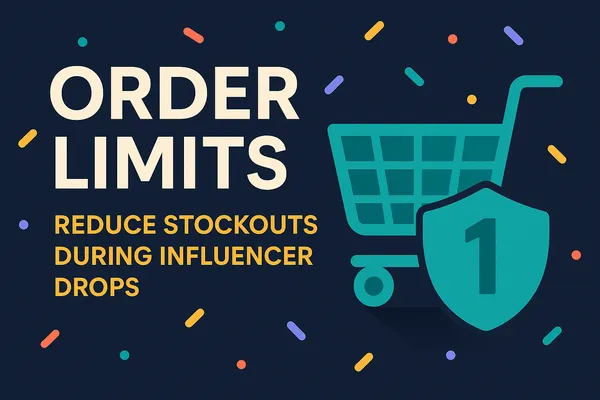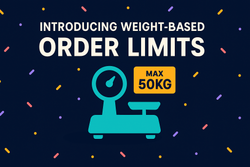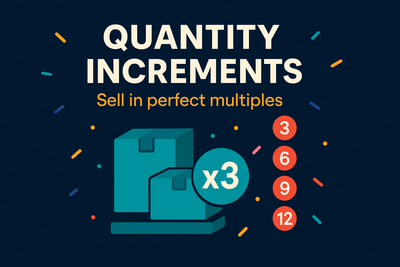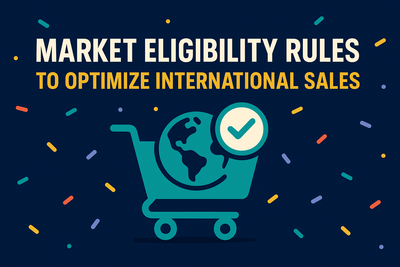When an influencer promotes your brand, the traffic surge can be both exciting and overwhelming. Products that usually sell steadily may vanish in minutes, and without guardrails, a few customers can buy out entire collections before others even get a chance. For Shopify merchants, this creates a frustrating mix of stockouts, support requests, and missed sales opportunities. Order limits are one of the simplest ways to keep these moments under control and ensure more customers get a fair shot.
Why influencer drops cause stockouts
Influencer marketing works because it drives urgency. Followers see their favorite creator wearing or using your product and rush to buy before it sells out. But this rush creates two main risks. First, a handful of shoppers may hoard items, leaving the majority empty-handed. Second, you may lose out on more balanced order sizes that help fulfillment stay efficient. Without clear rules in place, inventory disappears faster than expected and the shopping experience suffers.
How order limits prevent overselling
Order limits let you set clear rules on how products can be purchased. You can cap the maximum number of items per customer, enforce minimums, or require that products are bought in certain increments. For influencer-driven traffic, maximum limits are the most useful. By setting a per-customer cap, you stop a small group from buying out all the stock. This makes your limited items last longer and ensures more people have a chance to purchase.
The customer experience during drops
Stockouts not only frustrate shoppers but also weaken the influencer’s promotion. Customers who click through and find everything gone may leave with a poor impression. With limits in place, you extend product availability, reduce the sense of unfairness, and strengthen the trust between your store, your influencer partner, and the audience they bring in.
Using automation to keep limits consistent
Shopify merchants can combine order limit rules with automation to make sure they work seamlessly. For example, tagging customers after they purchase helps ensure they cannot bypass limits by trying again. You can also apply rules only to logged-in customers or restrict by region if you want to prioritize certain markets. These automated safeguards keep your launch fair without requiring constant manual oversight.
Example 1: Streetwear collection drop
Scenario: A streetwear brand partnered with a popular influencer for a hoodie release. In the past, some customers bought five or more hoodies at once, leaving thousands of fans empty-handed.
Benefits: By setting a maximum of one hoodie per customer, the brand extended availability through the full campaign window, boosted trust among fans, and reduced support complaints about unfair access.
Example 2: Beauty product influencer campaign
Scenario: A cosmetics company launched a new serum with an influencer’s endorsement. Without controls, a few resellers tried to purchase dozens of units for resale at inflated prices.
Benefits: The company set a maximum limit of two units per customer. This prevented bulk buying, allowed more genuine fans to try the product, and supported stronger long-term customer relationships.
Influencer campaigns are one of the fastest ways to create buzz, but they also magnify the risks of stockouts. Order limits protect your inventory, balance customer demand, and help you get the most out of every promotion. By setting up rules in advance, you can keep your next drop organized, fair, and profitable.









